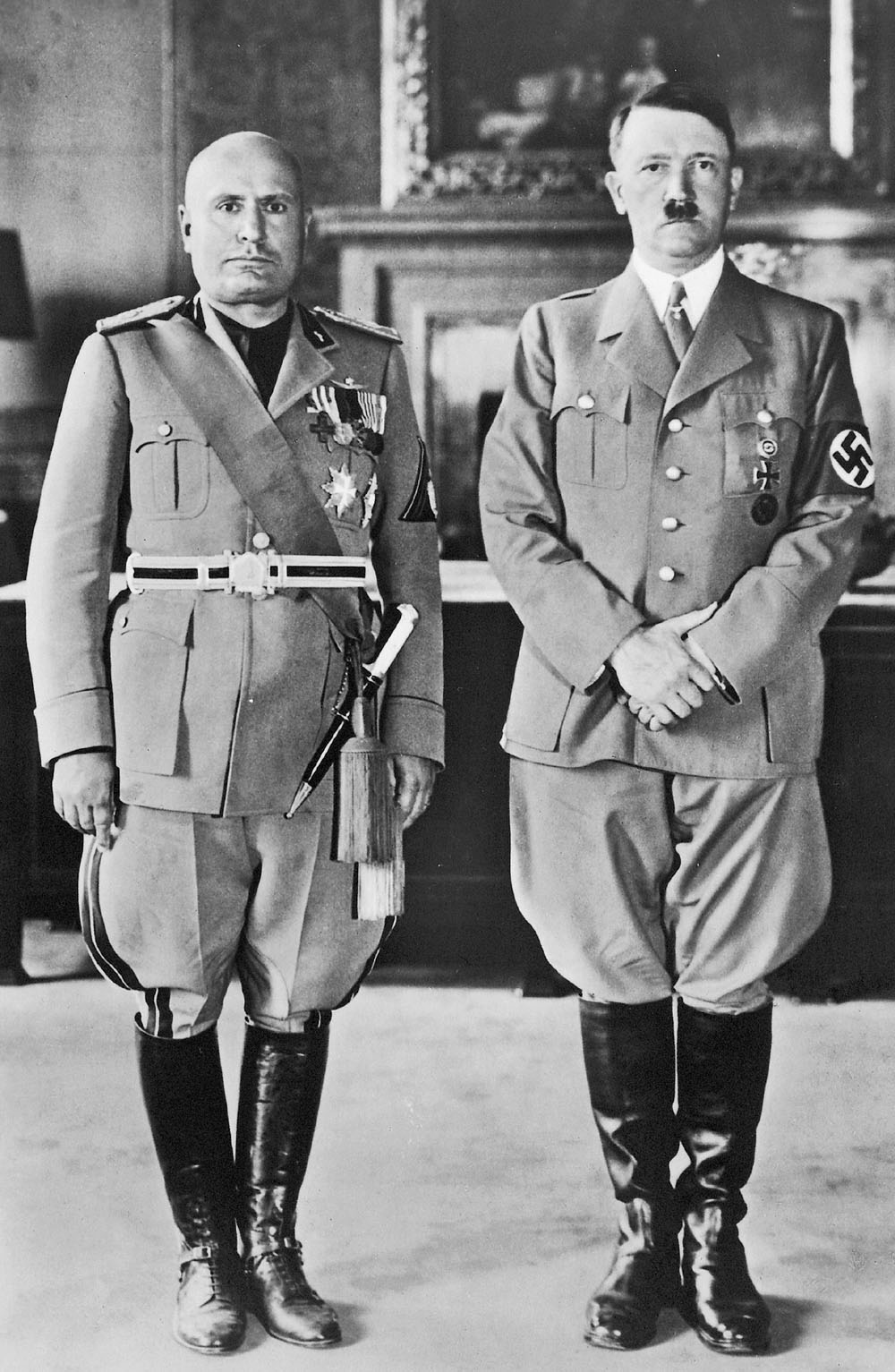
It is hardly surprising to find this postcard uncaptioned; one must remember it was produced at a time when both men had achieved such eminence on the European political stage that they were considered instantly recognizable. This superb Hoffmann image sees Benito Mussolini, Fascist leader of Italy, standing next to his friend and ally Adolf Hitler, Nazi leader of Germany.
The photograph was probably taken at some point during the conference held in the Führer House in Munich in September 1938, the meeting concluded with the signing of the ‘Munich Agreement’. Through the latter half of the 1920s Hitler had viewed Mussolini’s success in Italy with a mixture of envy and admiration; a decade later, it was Mussolini who stood in awe and admiration of Hitler as the Führer’s deeds surpassed his own achievements. Thereafter Mussolini played a subordinate role in a relationship dominated by Hitler.
Benito Amilcare Andrea Mussolini was born in Dovia di Predappio in the province of Forlì on 29 July 1883. In 1902, following a short time as a school teacher he travelled to Switzerland where, among other things, he worked as a translator. Returning to Italy in 1905 he spent a year in the army. On Italy’s entering the First World War in 1915, Mussolini volunteered and served until wounded during military exercises in 1917. After the war his political views seem to have changed on more than one occasion; having starting out a staunch socialist, Mussolini later embraced the extreme nationalism he was to maintain for the rest of his life.
Mussolini and Hitler share certain similarities, not least of which were the ways both men were to achieve political success; their appeal to the masses and the methods used to promote their political ideas as a cure for the severe economic crises and instability ravaging their respective countries at the time. Mussolini, as with Hitler in Germany, won the support of a cross section of the population through his oratory and the accompanying ferocious street battles. By 1921 Mussolini’s Fascio di Combattimento (Union of Combat), better known as the Fascists, had achieved substantial political success with over 30 seats in the Italian parliament. Mussolini and his Blackshirts marched on Rome in October 1922 forcing the resignation of the Italian Premier, Luigi Facta. King Victor Emmanuel III appointed Mussolini Italian Prime Minister soon after. Within two years, Mussolini, Il Duce (the Leader) had silenced all opposition.
In the wake of more military setbacks than successes, with the threat of Allied invasion and his support at home disappearing, Mussolini was summoned and dismissed by King Victor Emmanuel on 25 July 1943. Having endured detention at various locations following his dismissal, Mussolini attempted an escape to Switzerland, the attempt failed when the small group were captured by Italian partisans. Benito Mussolini, his comrades and his mistress Clara Petacci who was travelling with him were executed on 28 April 1945; their bodies were displayed in a grotesque and most undignified way in a public square in Milan.
The news of Mussolini’s death and the gruesome way his body had been put on public display, shocked Hitler; this, as much as any other reason accounts for the Führer’s decision that he would not to be captured alive. As the Red Army encircled Berlin in 1945, Hitler feared that his remains, if discovered, might also be put on exhibition; perhaps even in Moscow by his ideological enemy Stalin. The Führer ordered that in the event of his death his remains be disposed of by fire. Following his suicide on 30 April 1945, this order was obediently carried out. SS Major Otto Günsche (Hitler’s adjutant) assisted by SS Major Erich Kempka (Hitler’s chauffeur) and SS Major Heinz Linge (Hitler’s valet) carried out the Führer’s last order.